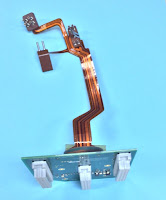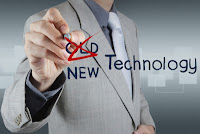One thing is for sure. You don’t want to scrap a $125,000 semiconductor wafer because dust or a contaminant gas exploited your process through a faulty electrical feedthrough. In vacuum or pressurized conditions, getting process control signals and power to and from the work environment is always a challenge. Continually evolving specifications of vacuum requirements, or pressurized manufacturing conditions, push the design limits of electrical feedthroughs. Failure of the feedthrough is not an option.
In applications requiring ultra-clean environments, feedthroughs are always a concern. Historically, the product-of-choice for semiconductor manufacturing applications was glass-to-metal or ceramic seals. While providing an excellent seal, they are quite limited by geometry, size, electrical shielding, and fragility. Compounding these limitations, manufacturing requirements continue to evolve making it necessary to deliver more data, provide greater signal shielding, and provide higher power. With glass-to-metal and ceramic seals, this becomes very difficult, expensive, and many times, near impossible.
Enter
epoxy feedthroughs. The epoxy materials available today make it fairly easy to design feedthroughs with curves and angles well beyond the capability of glass and ceramic. Epoxy feedthroughs can be applied in many shapes and sizes, provides an excellent seal, and accommodates shielded cable quite nicely.
In terms of cost, versatility, and availability, epoxy feedthroughs have a huge advantage. With manufacturing requirements pushing for smaller and more compact equipment, design versatility of the feedthrough is very important, and something that glass-to-metal feedthroughs can not match. Equipment design conditions often require special geometries of the connector, and using epoxy as the filler makes perfect sense.
Another outstanding advantage to
epoxy electrical feedthroughs are in availability. Small production runs are easily and quickly accommodated for testing and proof-of-concept.
Ancillary cost savings of epoxy feedthroughs can be evaluated on design accommodation / size reduction, and on the ability to provide cable harnesses right up to the seal, which dramatically lowers production cost. Time consuming manufacturing processes, such as soldering connectors, is eliminated.
For the most part, epoxy electrical feedthroughs can fit the bill as a better alternative to glass-to-metal or ceramic feedthroughs. Very few exceptions exist, and usually center around concern of the organics in epoxy, but again, these issues are very limited.
For more information contact BCE.
 Everyone at BCE (Belilove) would like to wish all of our customers, vendors, suppliers, families and friends a very happy, healthy and prosperous 2016!
Everyone at BCE (Belilove) would like to wish all of our customers, vendors, suppliers, families and friends a very happy, healthy and prosperous 2016!




















